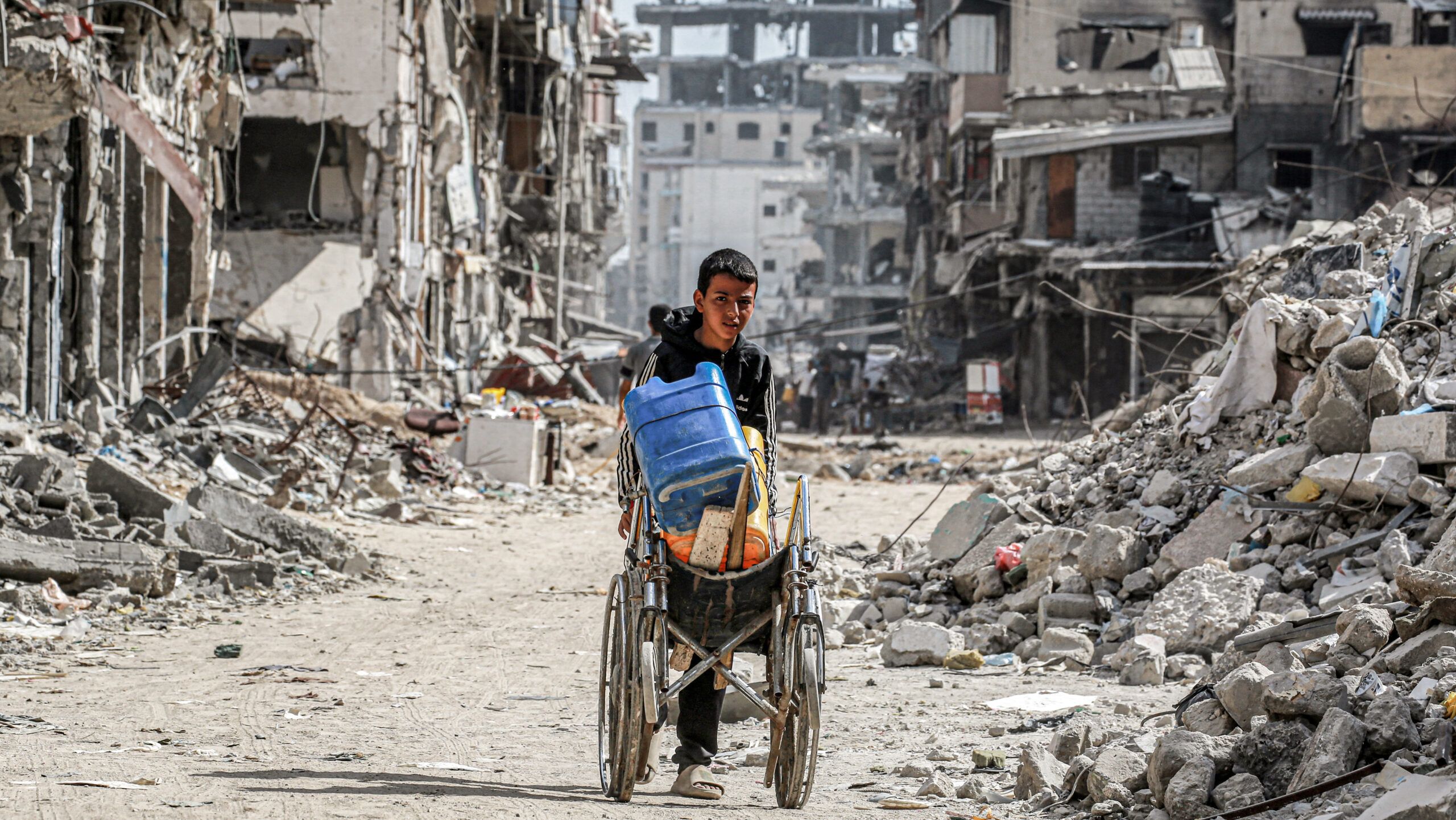Former IDF Maj. Gen. Ziv Tells TML: ‘Long-Term Plan Needed’ for Gaza
IDF intensifies operations in Gaza, targeting Hamas infrastructure and planning a full takeover as experts emphasize the need for clear political strategies and prioritizing hostage recovery
Hostage agreements are in full swing as the IDF continues to isolate and eliminate terrorist groups within Gaza, recently neutralizing a Hamas terrorist emerging from a tunnel armed with an RPG. This is part of broader operations targeting tunnel networks and rocket launch sites, including those operating from UNRWA buildings.
Former IDF Maj. Gen. Israel Ziv noted that while the IDF is performing well “tactically and technologically, strategically, the lack of clear political decisions is problematic.” He told The Media Line, “We need a long-term plan, whether it’s continuing the military operation or pursuing a political solution involving the Palestinian Authority.”
Ziv emphasized the importance of recovering hostages and ensuring Israel’s security, adding, “The main objective for Israel is bringing back the hostages. It should be the number one task for the IDF and the State of Israel. Additionally, we need to repair the damage from October 7 and ensure a secure future.”
The events of October 7th seemingly caught Israeli officials by surprise, a fact that Professor Zisser from the Moshe Dayan Center for Middle Eastern Studies believes was “due to the way people looked at Hamas.”
I think everyone saw it as a terrorist organization capable of limited attacks, like missile strikes, but not as an army that could launch a massive military campaign. The main question was about future decisions towards Hamas. Once the government realized the extent of the attack, the decision was made to destroy them.
“I think everyone saw it as a terrorist organization capable of limited attacks, like missile strikes, but not as an army that could launch a massive military campaign,” he told The Media Line. “The main question was about future decisions towards Hamas. Once the government realized the extent of the attack, the decision was made to destroy them.”
Maj. Gen. Ziv confirmed that initially, the most important task for the Israeli army was to recover from the ‘surprise’ and regain control over the attacked areas, adding, “It took around three days to fully recover the territory and settlements and another two days to eliminate all the terrorists who had invaded.”
The initial assault on southern Israel included at least 3,000 rockets launched into Israeli territory, vehicle and powered paraglider incursions, massacres resulting in the deaths of 1,300 Israelis, and the abduction of 251 individuals into Gaza.
In the immediate aftermath, the IDF launched operations to eliminate the terrorists responsible.
Ziv told The Media Line that about 1,300 terrorists were killed by the IDF in the first stage and that the second stage involves fully taking over Gaza and targeting Hamas.
Our plan initially focused on retaliation, but we realized this was a full-scale war. It took us about ten days to rewrite the plan, understanding that we had to go after Hamas with full force, including taking over Gaza.
He said, “Our plan initially focused on retaliation, but we realized this was a full-scale war. It took us about ten days to rewrite the plan, understanding that we had to go after Hamas with full force, including taking over Gaza.”
As the war progressed into November 2023, the IDF expanded its efforts in Gaza, targeting Hamas’ military infrastructure, including extensive tunnel networks. In February, the IDF Spokesperson shared that 1,500 Hamas terrorists were apprehended.
However, as the war started to drag on and exceed expectations, Prof. Zisser noted that “there was no clear direction on where it was heading. Experts understood that the political survival of the government was linked to the war, so Netanyahu had no reason to bring it to an end quickly.”
Maj. Gen. Ziv also said that the IDF faces operational challenges, including Gaza’s densely populated urban layout. He explained to The Media Line, “Significant forces are required to operate in such terrain. We deployed five divisions to the northern part of Gaza. Despite this, we encountered more tunnels and anti-tank missiles than expected.”
In April 2024, targeted strikes eliminated three key Hamas operatives, the sons of Ismail Haniyeh, facilitating the entry of humanitarian aid through a newly established northern crossing. Regardless, international opinion was shifting.
“Initially, there was strong international backing for Israel,” Maj. Gen. Ziv stated. “Around March or April, this shifted, with some viewing Israel as the aggressor. Despite this, we need to ensure Hamas cannot recover and pose a threat again.”
I don’t foresee an immediate full-scale war with Hezbollah or Iran. The situation is risky, but not yet at that point. If Hamas agrees to a deal under American pressure, it could prevent further escalation. Israel should aim for a recovery plan for Gaza and a cease-fire in the north to avoid prolonged conflict.
Looking ahead, he remained cautious about immediate escalation. “I don’t foresee an immediate full-scale war with Hezbollah or Iran. The situation is risky, but not yet at that point. If Hamas agrees to a deal under American pressure, it could prevent further escalation. Israel should aim for a recovery plan for Gaza and a cease-fire in the north to avoid prolonged conflict.”

